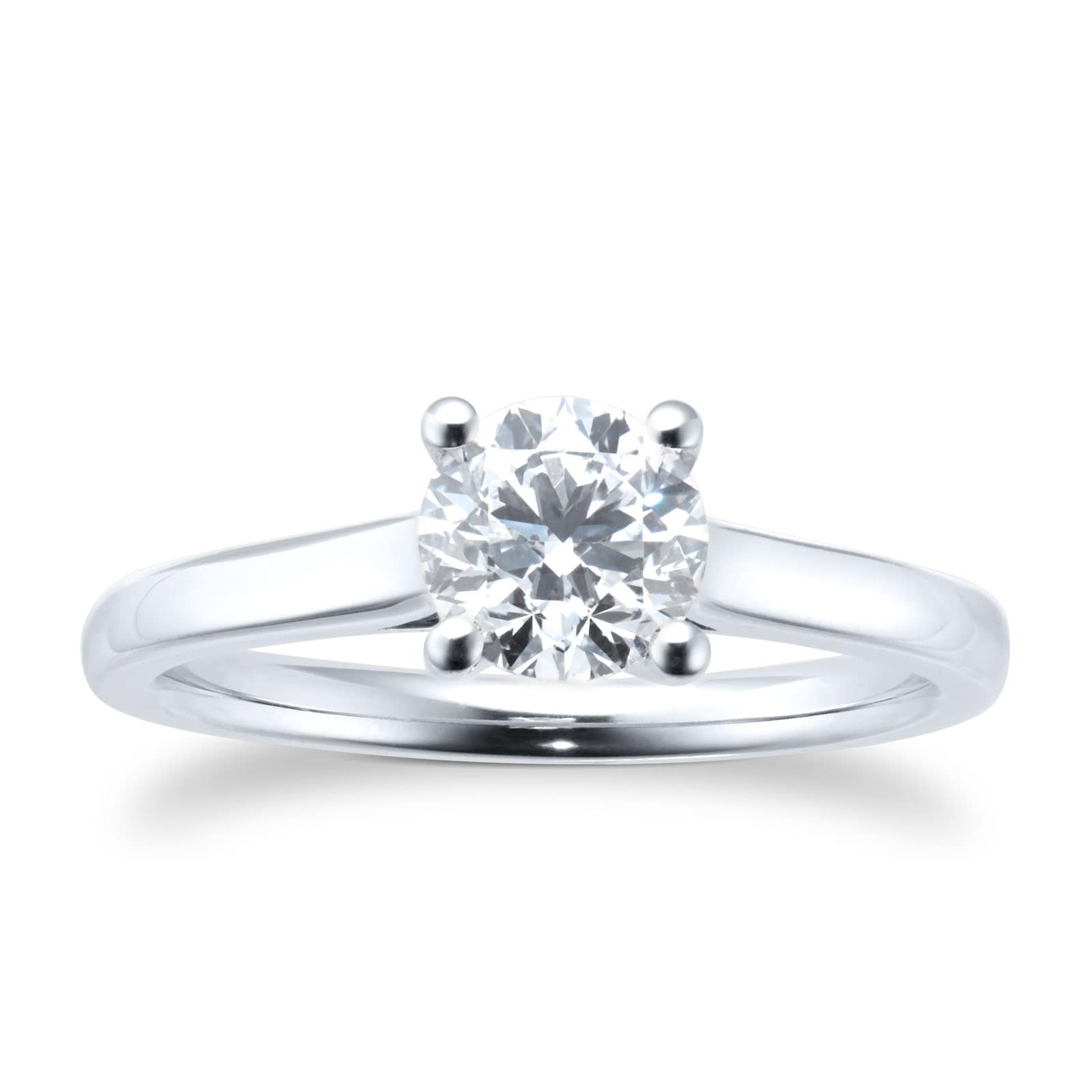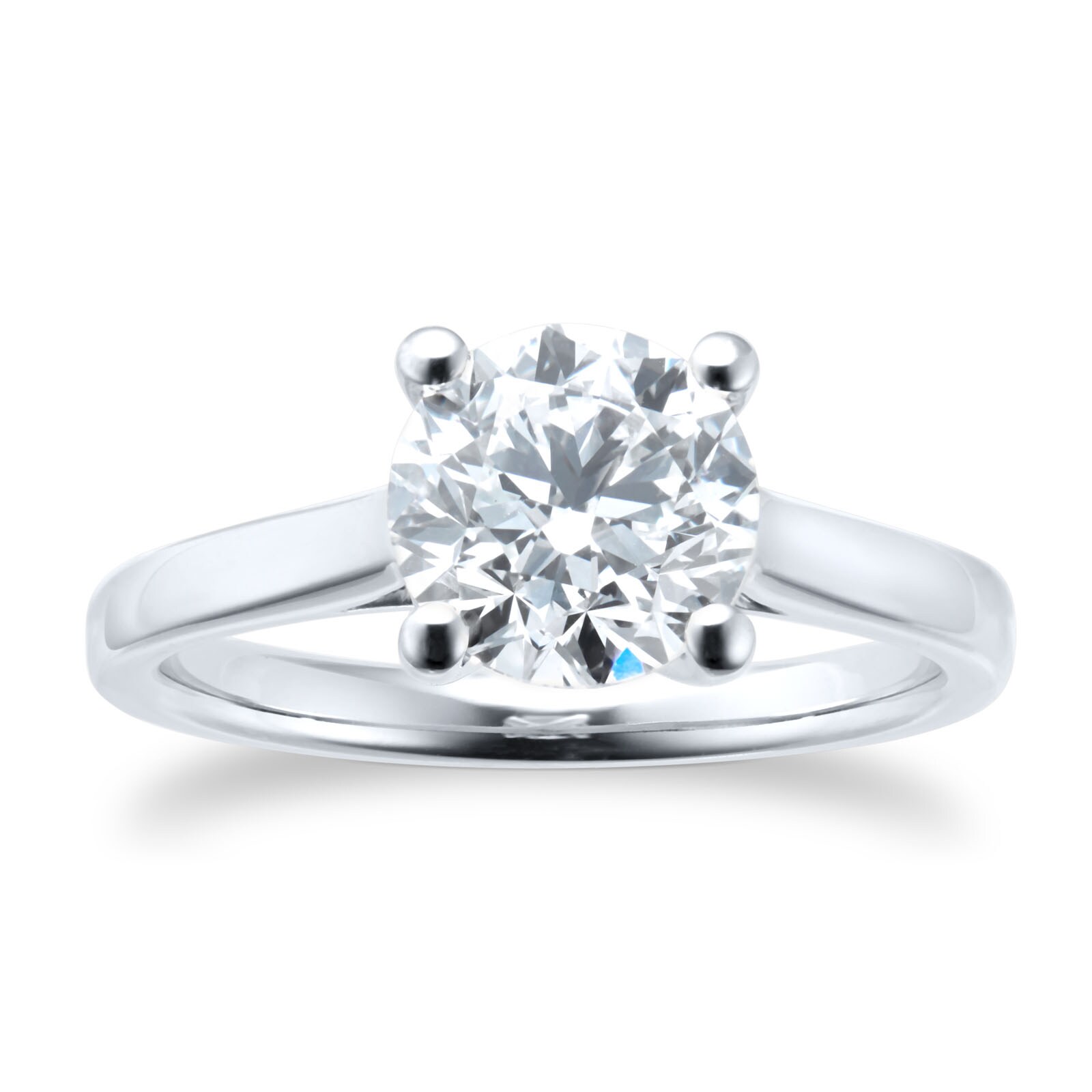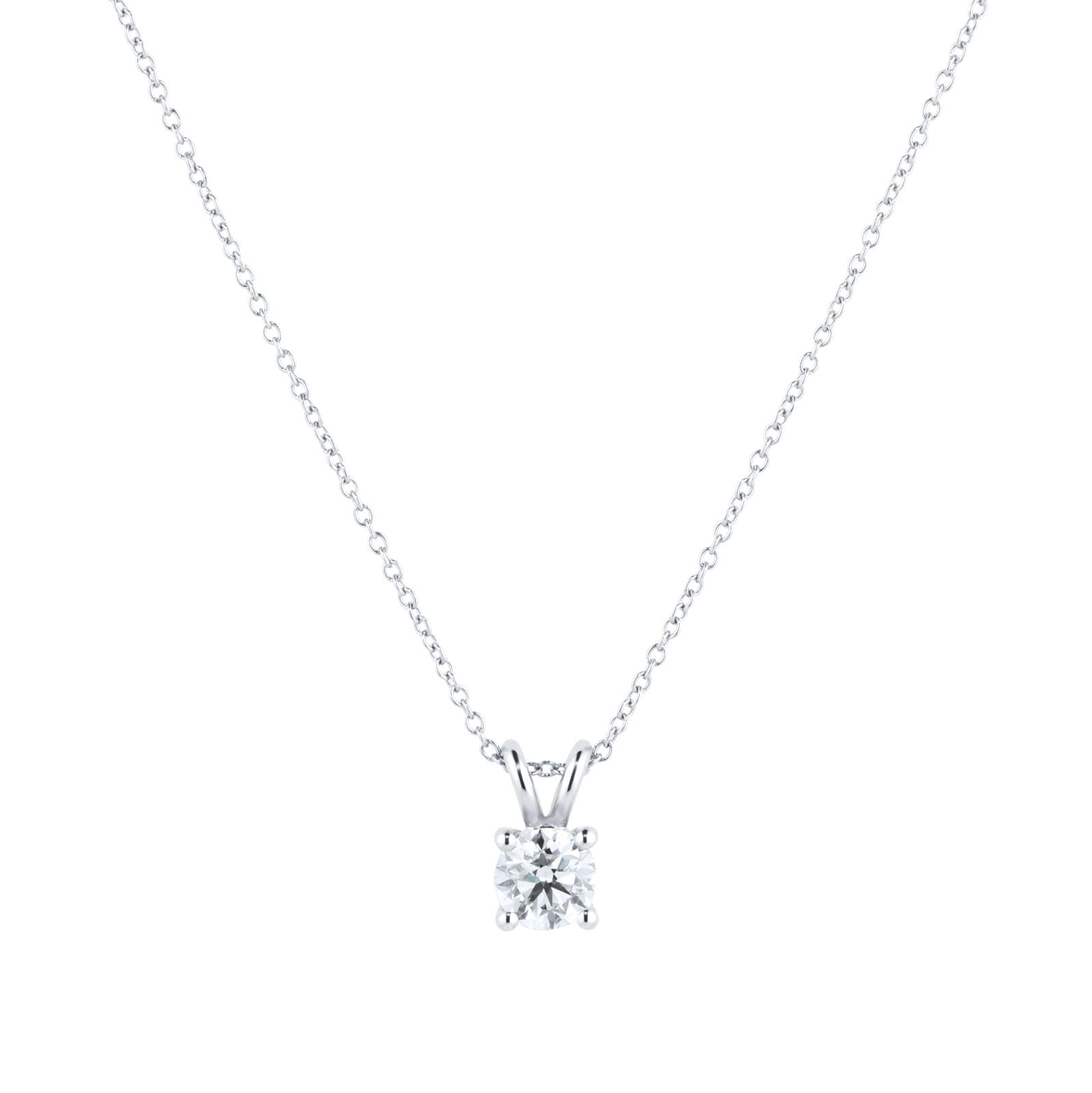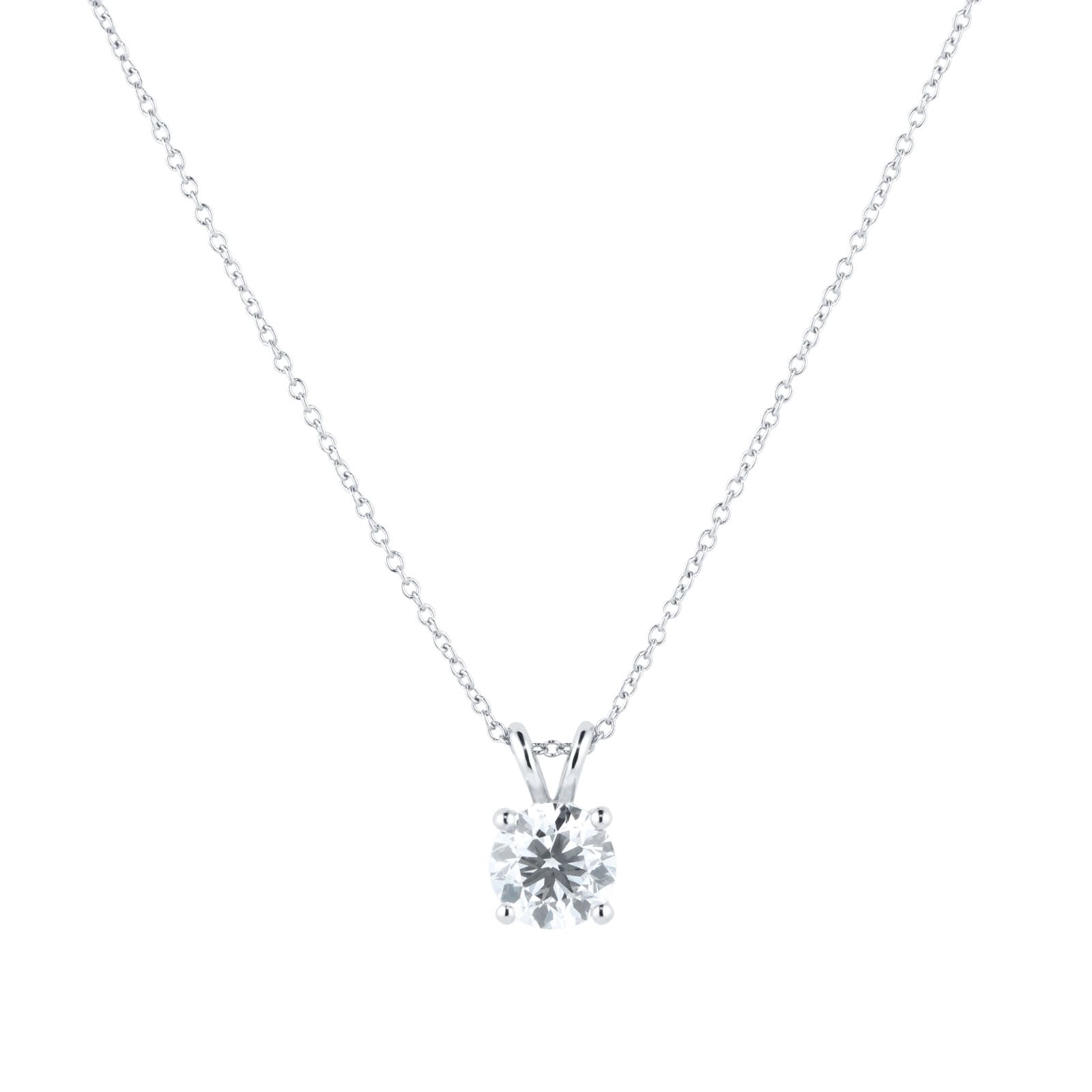‘Certified GIA’ - the stress-free way to buy diamonds
Whether you’re buying a new car, the holiday of a lifetime or a piece of diamond jewellery, knowledge is power. Straightforward, unbiased data helps you make an informed decision.

That’s especially true when it comes to buying an investment that also carries sentimental weight, such as a diamond engagement ring or a pair of classic diamond studs. So Goldsmiths is proud to offer GIA-certified diamonds in its 18ct gold and platinum engagement rings, and platinum solitaire diamond jewellery, to make one part of the decision that much easier.
The Gemological Institute of America, or GIA, is the world’s leading authority on diamonds. It was established in 1931 by Robert M. Shipley, a jeweller-turned-gemologist with a simple premise: customers should know what they are buying.
Shipley suggested a universal way to assess diamonds, known as the Four Cs. In 1953, the GIA patented the International Diamond Grading System and issued its first diamond grading reports. These have become the international benchmark for diamond quality.
A GIA certificate guarantees that a diamond is natural and untreated. It also provides objective information on a stone’s carat weight, colour, cut and clarity - Shipley’s four Cs - alongside a visual diagram of its exact proportions.
The Gemological Institute of America, or GIA, is the world’s leading authority on diamonds. It was established in 1931 by Robert M. Shipley, a jeweller-turned-gemologist with a simple premise: customers should know what they are buying.
Shipley suggested a universal way to assess diamonds, known as the Four Cs. In 1953, the GIA patented the International Diamond Grading System and issued its first diamond grading reports. These have become the international benchmark for diamond quality.
A GIA certificate guarantees that a diamond is natural and untreated. It also provides objective information on a stone’s carat weight, colour, cut and clarity - Shipley’s four Cs - alongside a visual diagram of its exact proportions.
Carat Weight
The word ‘Carat’ comes from carob seeds, which were historically used when weighing diamonds. One carat is equal to 200mg. Diamonds come in various shapes and can be cut deeper or shallower, so two stones of the same carat weight can appear in different sizes. The certificate also includes details of the stone’s exact proportions. A selection of Goldsmiths engagement rings come with GIA certification across a range of styles.
The word ‘Carat’ comes from carob seeds, which were historically used when weighing diamonds. One carat is equal to 200mg. Diamonds come in various shapes and can be cut deeper or shallower, so two stones of the same carat weight can appear in different sizes. The certificate also includes details of the stone’s exact proportions. A selection of Goldsmiths engagement rings come with GIA certification across a range of styles.
Colour
The GIA grades white diamonds on a scale from D to Z, with D being the whitest, and Z being tinted. It’s very rare to find diamonds without the chemical impurities that cause a slight tint, so colourless stones graded D to F are incredibly valuable. While colourless stones are prized for their brightness, some people are drawn to diamonds with a yellow or grey tint. Every diamond is different, and it comes down to personal preference. Goldsmiths’ GIA-certified jewellery features diamonds rated H or above.
The GIA grades white diamonds on a scale from D to Z, with D being the whitest, and Z being tinted. It’s very rare to find diamonds without the chemical impurities that cause a slight tint, so colourless stones graded D to F are incredibly valuable. While colourless stones are prized for their brightness, some people are drawn to diamonds with a yellow or grey tint. Every diamond is different, and it comes down to personal preference. Goldsmiths’ GIA-certified jewellery features diamonds rated H or above.
Cut
Not to be confused with a diamond’s shape (for example round-brilliant, pear, oval or emerald-cut), the Cut grade on a GIA certificate is a measure of how well a round-brilliant stone is cut - from Poor to Excellent. A well-cut gemstone is symmetrical, with every facet in its rightful place. The cut quality affects how a diamond reflects light, and therefore how brightly it sparkles. Cut also interacts with the other three Cs: an excellent cut can make a diamond appear larger than its carat weight, or a brighter colour. A clever cut can also mask any imperfections.
Not to be confused with a diamond’s shape (for example round-brilliant, pear, oval or emerald-cut), the Cut grade on a GIA certificate is a measure of how well a round-brilliant stone is cut - from Poor to Excellent. A well-cut gemstone is symmetrical, with every facet in its rightful place. The cut quality affects how a diamond reflects light, and therefore how brightly it sparkles. Cut also interacts with the other three Cs: an excellent cut can make a diamond appear larger than its carat weight, or a brighter colour. A clever cut can also mask any imperfections.
Clarity
The fourth C is a measure of a diamond’s internal imperfections and external blemishes, as seen using a 10x magnification loupe. This is rated from Flawless through Internally Flawless, Very Very Slightly, Very Slightly and Slightly to Included. Flawless and Internally Flawless diamonds are incredibly rare. The GIA certificate also specifies the type and location of any blemishes and inclusions. Goldsmiths’ GIA-certified diamonds are all rated at least SI (Slightly Included) for clarity.
The fourth C is a measure of a diamond’s internal imperfections and external blemishes, as seen using a 10x magnification loupe. This is rated from Flawless through Internally Flawless, Very Very Slightly, Very Slightly and Slightly to Included. Flawless and Internally Flawless diamonds are incredibly rare. The GIA certificate also specifies the type and location of any blemishes and inclusions. Goldsmiths’ GIA-certified diamonds are all rated at least SI (Slightly Included) for clarity.
Think of a GIA certificate as your diamond’s ID; a way to document its unique characteristics. Of course, it’s not the only thing to consider when buying jewellery. Beauty is in the eye of the beholder; often people find that a certain stone speaks to them, regardless of what its certificate says. Whether set into a simple pendant, or a ring to treasure forever, by buying a GIA-certified diamond you can be sure that not only is it beautiful, it comes with the paperwork to prove it.
Think of a GIA certificate as your diamond’s ID; a way to document its unique characteristics. Of course, it’s not the only thing to consider when buying jewellery. Beauty is in the eye of the beholder; often people find that a certain stone speaks to them, regardless of what its certificate says. Whether set into a simple pendant, or a ring to treasure forever, by buying a GIA-certified diamond you can be sure that not only is it beautiful, it comes with the paperwork to prove it.
Explore our stunning selection of diamond jewellery here at Goldsmiths online or visit us in store at one of our showrooms where our jewellery experts will be delighted to help you.
Author Credit: The Telegraph’s former Jewellery & Watches Editor, Sarah Royce-Greensill has spent the last decade immersed in the fascinating world of fine jewellery. Sarah edits the ‘Showcase’ section of Vanity Fair On Jewellery, a prestigious anthology of everything new and noteworthy in jewellery, and is a contributor to Conde Nast Traveller, Tatler, Times Luxx, Country Life and Harrods Magazine among other titles.





